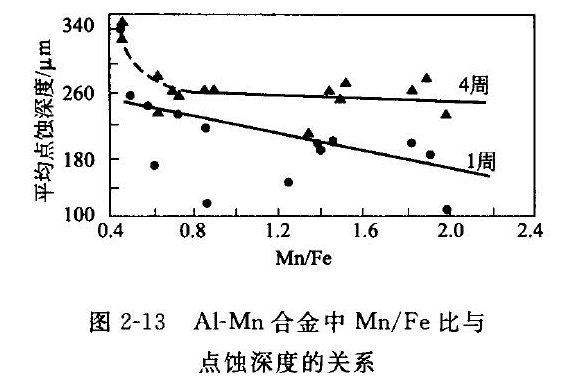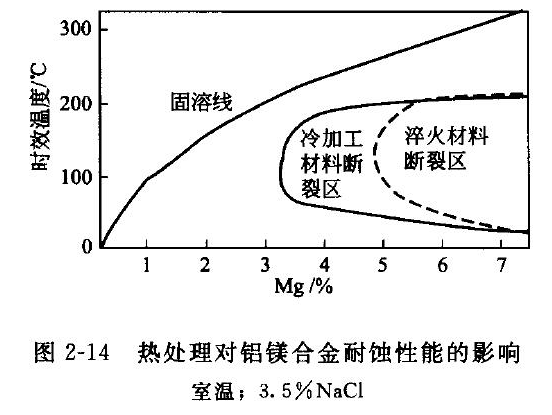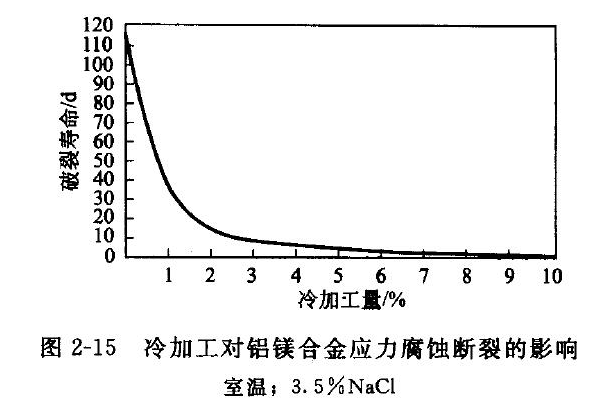News
FRIENDLY/link Nantong zhuolida Ali SAMSAN Corrosion machining Nantong zhuolida HJD Shenzhen zhuolida Esprit print
Classification of corrosion behavior of aluminum alloys
In the aluminum alloy series, in addition to pure aluminum, al-mg and al-mn, there are a1-cu-mg, ai-cu-mn, a1-mg-si-cu, ai-zn-mg Cu and al-cu-mg-fe-ni series.Corrosion behavior of pure aluminum and aluminum alloys different grades of aluminum alloys have different corrosion resistance and corrosion behavior due to different alloying elements and metal phases in their tissues.
I. corrosion behavior of pure aluminum
Pure aluminum is divided into high pure aluminum and industrial pure aluminum according to the purity.But on the whole, the mechanical strength of pure aluminum is not high, but good plasticity, good corrosion resistance.In particular, the high plasticity and excellent corrosion resistance of pure aluminum have been widely used in aluminum products.In the surface texture etching technology of aluminum alloy introduced in this book, the application of pure aluminum accounts for a large proportion, so it is more important to discuss the corrosion behavior of pure aluminum.
Aluminum is a kind of active amphoteric metal, which can react with both acid and alkali. Especially in alkaline solution, due to the complexation catalysis of OH 1, aluminum corrodes uniformly in pure alkaline solution, and the corrosion rate increases with the increase of pH value or temperature.If the purity of aluminum is increased, the corrosion rate will decrease correspondingly under the same conditions.
The purity of pure aluminum has an impact on the corrosion behavior of aluminum. The higher the purity, the greater the tendency of uniform corrosion, the more difficult it is to achieve the desired texture etching effect.The main impurities of pure aluminum are Fe and Si o Fe. When the impurity content of Si is high, it can improve the strength but reduce the plasticity, conductivity, corrosion resistance and make the oxide film easy to destroy.The solubility of Fe in aluminum is very small, only at eutectic temperature (6550C).052 it is written that FeAl3 0 Si, a hard and brittle acicular compound formed by Fe and aluminum at room temperature of 0.002%, does not form a compound with aluminum, and the excess impurity Si exists in a free state except dissolved in a small amount.Since both Si and Fe exist in aluminum, industrial pure aluminum can actually be considered as an al-fe-si ternary alloy.In addition to SiFeA13 impurities, two ternary compounds a. Yin can be formed in industrial pure aluminum.When the content of Fe is greater than Si, the iron-rich a compound (SiFe3 A12) is formed, which is in skeleton shape or mass shape.When Si content is larger than Fe, Si rich thick needle-like lu phase (Si2 Fee A19) is formed, which is unfavorable to the plasticity of aluminum, especially the latter.Fe and Si mostly form ternary compounds in industrial pure aluminum, but FeA13 compounds or free Si are rare.In order to obtain fine grain, uniform, good stamping performance of industrial pure aluminum plate, the content of impurity Fe should be greater than Si, Fe/Si ratio greater than 2-3 is better.At the same time, al-ti or ai-ti-b alloys should be added as grain refiners.In general, the texture etching performance of pure aluminum is better, whether using a single acidic or alkaline etching solution can get a better texture effect.For surface effects requiring large roughness, acid - base two - step method can also achieve good results.Especially 1050 and 1010 were etched by acid - base two - step etching.Among the commonly used materials, Korean materials have fine texture.The texture of Taiwan material is fine and has fine silk lines.Japanese sumitomo company's high gloss pure aluminum, after etching the surface is easy to have obvious silk effect;Domestic material quality is not very stable, if the quality of good domestic aluminum, texture etching effect is very good.Domestic aluminum with L6 used more, texture effect and imported aluminum is not inferior.Plus domestic materials have a price advantage, in production can do priority.
Ii. Corrosion behavior of aluminum alloy
I. corrosion behavior of rustproof aluminum
(1) corrosion of al-mn rustproof aluminum alloy al-mn alloy is a widely used alloy material in deformed aluminum alloy.Its mechanical strength is higher than that of pure aluminum, its plasticity is better, and its welding performance is better. Mn has little effect on the electrode potential of aluminum, and its corrosion resistance is only slightly lower than that of high purity aluminum.
The main phase of ai-mn alloy is MnA16, and its potential is almost equal to that of pure aluminum.Mn, on the one hand, is an element to enhance the strength, and on the other hand, is an element to neutralize the harmful effects of Fe, which can transform part of FeAI into (FeMn) A16. When the acicle-like FeA13 is transformed into flake (FeMn) Alb, it forms a weak cathode phase, which is not easy to destroy the oxide film on the surface, which ACTS on the corrosion behavior of the alloy.The corrosion characteristic of ai-mn alloy is easy to produce pitting corrosion, especially Mn/Fe in the alloy is easier to produce deeper pitting than reducing hour (see figure 2-13), which is beneficial to the texture etching of the alloy.As the content of Mn in the alloy increases, the intercrystalline corrosion tendency increases. In the state of quenching and annealing, the alloy has almost no intercrystalline corrosion, but in the condition of heating and slow cooling, there is intercrystalline corrosion tendency. After the corrosion of this kind of alloy, crystal grain reappears easily, but this kind of alloy has no stress corrosion tendency.

Al-mn alloy, only one domestic brand LF21, corresponding to the American aluminum association belongs to 3003.The surface of this alloy is "sand" and "silk" after being etched with a single alkaline texture. It has good decorative properties when used for the bottom decoration treatment before screen printing of nameplates and panels.For the texture with higher surface roughness requirements, after etching with acid-base two-step method, it is generally "sand", "silk" double effect. Due to the difference of different processing technology, the surface of some similar alloys after etching with acid-base two-step method is only "sand" effect, while "silk" effect
It had almost no effect.In the production to pay attention to the choice of the same alloy processors provided by the aluminum, which is important to ensure the consistency of the product surface effect.
(2) the corrosion of al-mg rustproof aluminum alloy Mg has a relatively high solid solubility in aluminum. With the increase of Mg content in the alloy, the strength of the alloy increases and the plasticity decreases, but its welding performance and corrosion resistance are excellent.Mg reduces the potential of the aluminum alloy, and the oxide film of the al-mg alloy is denser than the metal that forms the film, so the film is dense.When water is absorbed to form hydroxide, the corrosion resistance of the alloy in brine and weakly alkaline solution is higher than that of pure aluminum.When Mg content exceeds 3% - 5 intestines, intergranular corrosion and stress corrosion tendencies occur.When Mg content exceeds 7%, the sensitivity to stress corrosion is obvious.
The heat treatment process has a significant influence on the corrosion properties of al-mg alloy, as shown in FIG. 2-14.

The cold working capacity has a great influence on the resistance to stress corrosion. With the increase of cold working capacity, the rupture corrosion life is shortened, as shown in figure 2-15.The metal phase compound of al-mg alloy is Mgt A13, which is an anodic phase. When the alloy is a single-phase supraturated solid solution, the main corrosion forms are pitting corrosion, intercrystalline corrosion and stress corrosion tendency.When aging is in the state of aggregation, the alloy has no tendency of intergranular corrosion and stress corrosion. When aging phase is in the state of dispersion and continuity, the alloy has certain sensitivity to intergranular corrosion and stress corrosion.
There are several grades of this series of alloys, and the domestic grade LF2 is widely used, which corresponds to the surface effect of alaa 50520 after texture etching, which is similar to al-mn alloy.However, the surface roughness is lower than that of ai-mn alloy after etching with a single alkaline texture.
2. Corrosion behavior of aluminum alloy
When Cu is added to aluminum, the strength of the alloy is improved. Cu in the compound reduces the electrode potential of aluminum and the corrosion resistance.If Mg is added to al-cu alloy, al-cu-mg alloy (such as LY11, LY12, etc.) is formed, also known as dura aluminum alloy.Add human Mn to ai-cu alloy to form ai-cu-mn alloy (such as LY16, LY17, etc.).Al-cu - mg-fe-ni, ai-cu-li, al-cu-mg-si and a1-zn-mg-cu are also included.
There are different intermetallic compounds in each series of al-cu alloys.The main alloys in the al-cu-mg series are CuAI2, CuMgAl:, etc.The main alloys in al-cu-mn series are CuAl2, CuMn2 Al:, etc.The main al-cu-li alloys are CuAI2, LiCuAI12, Lie Cub All: and so on.Al - Cu - Mg - Fe - Ni alloy mainly include CuMgA12, FeNiAls, etc.A1-mg-si-cu series alloys mainly include CuA12, Mgt Si,Cu4 Mg5 S14 AI second class.Among ai-zn-mg-cu series alloys, there are mainly MgZn2, Mg3 Zn3 Al:, etc.In these phases, except M$2 Si, MgZn2, Mg3 Zn3 Al: belong to the anode phase, the others are the cathode phase.
All the al-cu alloys have the same corrosion behavior, and this series of multiple aluminum alloys are prone to corrosion, intercrystalline corrosion, stress corrosion and denudation, especially the intercrystalline corrosion sensitivity.The intercrystalline corrosion of this alloy is almost unavoidable, and the tendency of intercrystalline corrosion is more serious when the precipitation phase is distributed in a thin and continuous chain, which forms a corrosion channel.The texture etching of this series of alloys is mainly intergranular corrosion, and the uniformity of pitting is difficult to control, especially when higher roughness is etched by acid - base two-step method.
The most commonly used alloy in this series is LY12(Alcoa 2024).The hard state of the alloy (ly12-y) is etched with a single alkaline texture and the surface roughness reaches R.More than 1.5, and the brightness and uniformity are good.The surface effect of another natural aging label (ly12-cz) is similar to that of al-mn alloy after a single alkaline texture etching.
3. Corrosion behavior of forged aluminum alloy
(1) corrosion of al-mg-si wrought aluminum alloys the domestic grade LD31 of this alloy corresponds to Al grade 6063.The alloy has medium strength, good plasticity, excellent weldability and corrosion resistance.

In particular, 6063 has excellent thermoplasticity, which can be processed into various parts with complicated structure, thin wall and hollow, and has excellent welding performance without stress cracking and corrosion.This alloy has a very smooth surface after processing and is easy to anodize and color.The alloy has good texture etchability. The surface texture of the etched alloy is even and the roughness is easy to adjust, especially when the roughness is high.
(2) corrosion of ai-mg-si-cu wrought aluminum alloy the domestic brand LD30 of this alloy corresponds to the American aluminum association brand 6061.Department is added on the basis of 6063 Cu alloy strengthening and, therefore has better strength than in 6063. The texture etching performance and 6063, but the oxidation performance just below 6063, super-hard aluminum alloy mesh yu use fewer texture etching technology, this is due to its texture etching effect is not ideal, especially roughness requirement under the condition of high effect is poorer, needs further research.
For cast aluminum alloys, due to the large Si content in the alloy, the surface after texture etching is gray, and the usual chemical/electrochemical polishing method cannot be used for gloss treatment, so it is not suitable for decorative texture etching.However, it is a good pretreatment method to improve the bonding force for the bottom layer of electroplating and coating.If the Si content of the workpiece in the cast aluminum alloy is not high, the surface effect after the texture etching is better.If high roughness is required, two - step acid - base etching and polishing, the texture effect is also good.
Shenzhen address: building A3, huafa industrial park, fuyuan road, fuyong street, baoan district, shenzhen
Address: no. 268 jinchuan road, nantong hi-tech industrial development zone
Company website: http://www.zhuolida.com
Telephone: 0513-81601668